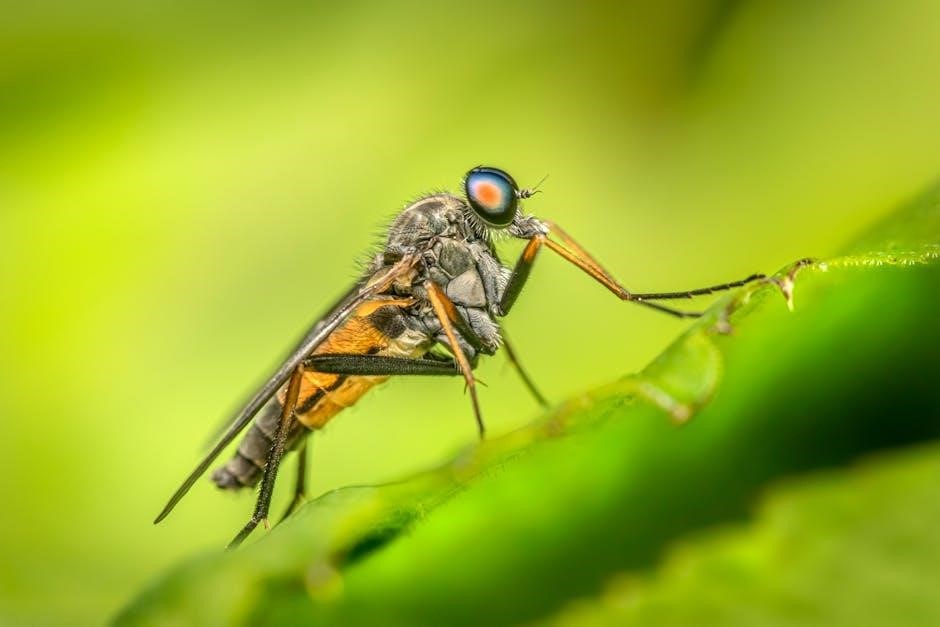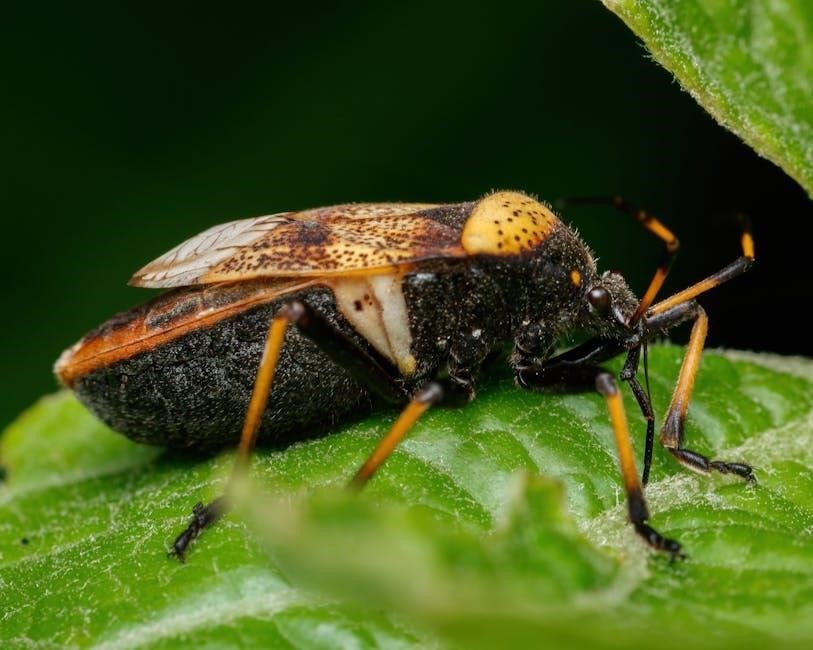The Living Environment Regents Exam assesses high school students’ knowledge of ecology, genetics, evolution, and human impact. It is crucial for graduation, requiring a comprehensive study guide for structured preparation and mastery of biological concepts.
1.1 Overview of the Exam Format and Content
The Living Environment Regents Exam is a comprehensive, 3-hour assessment consisting of 60 multiple-choice questions and lab-based sections. It evaluates understanding of ecological principles, cellular biology, genetics, and human physiology. Students must demonstrate knowledge of scientific inquiry, data analysis, and critical thinking. The exam includes open-ended questions and requires application of concepts to real-world scenarios. Preparation involves mastering key biology topics and practicing time management to ensure thorough completion of all sections.
1.2 Importance of the Living Environment Regents Exam
The Living Environment Regents Exam is a critical assessment for New York high school students, serving as a graduation requirement. It evaluates mastery of core biological concepts and scientific literacy. The exam ensures students demonstrate critical thinking, data analysis, and problem-solving skills. By passing, students showcase their readiness for college-level science courses and future STEM opportunities, making it a cornerstone of their academic achievement and career preparation.

Key Concepts in Ecology and Ecosystems
Ecology explores interactions between organisms and their environment, focusing on energy flow, nutrient cycles, and biomes. Understanding ecosystems’ balance and human impact is essential for conservation strategies.
2.1 Energy Flow and Nutrient Cycles
Energy flows through ecosystems via food chains and webs, starting with producers like plants. Energy decreases at each trophic level, following the 10% rule. Nutrient cycles, such as water, carbon, and nitrogen cycles, recycle essential resources, sustaining life. Decomposition returns nutrients to the soil, maintaining ecosystem balance. Understanding these processes is vital for grasping how ecosystems function and support biodiversity.
2.2 Biomes and Ecosystem Interactions
Biomes are large, distinct ecological communities shaped by climate and geography. Examples include forests, deserts, and aquatic ecosystems; Each biome supports unique biodiversity, with plants and animals adapted to specific conditions; Interactions within biomes, such as predator-prey relationships and symbiosis, maintain balance. Additionally, biomes influence and are influenced by global processes like climate patterns and nutrient cycling, highlighting their interconnected role in Earth’s ecosystems.
2.3 Human Impact on Ecosystems
Human activities significantly alter ecosystems through deforestation, pollution, and resource depletion. These actions disrupt biodiversity, causing habitat loss and extinction. Climate change, driven by emissions, exacerbates ecological stress. Conservation efforts, such as reforestation and renewable energy, mitigate harm. Understanding these impacts is crucial for developing sustainable practices that preserve ecosystems for future generations while addressing current environmental challenges.

Cellular Biology and Biochemistry
Cellular biology explores cell structure and function, while biochemistry examines chemical processes like energy production and membrane transport, essential for understanding life’s fundamental mechanisms and processes.
3.1 Cell Structure and Function
Understanding cell structure and function is foundational. The cell membrane, a phospholipid bilayer, regulates material transport. Organelles like the nucleus, mitochondria, and ribosomes perform specialized roles. The nucleus controls genetic material, while mitochondria generate energy. Ribosomes synthesize proteins. Membrane transport includes passive (diffusion, osmosis) and active mechanisms. Cells also undergo processes like photosynthesis and cellular respiration, essential for energy conversion and sustainability.
3.2 Membrane Transport and Cellular Respiration
Membrane transport includes passive processes like diffusion and osmosis, which require no energy, and active transport, which uses ATP. Cellular respiration involves glycolysis, the Krebs cycle, and the electron transport chain, converting glucose into ATP. This energy production is vital for cellular functions, emphasizing the interplay between membrane dynamics and metabolic pathways in sustaining life and cellular activity.
3.3 Photosynthesis and Its Role in Ecosystems
Photosynthesis is a vital process where plants, algae, and some bacteria convert light energy into chemical energy, producing glucose and oxygen. This process occurs in chloroplasts and is essential for life, forming the base of most food chains. It sustains ecosystems by providing energy for herbivores and maintaining atmospheric oxygen levels, supporting aerobic respiration in nearly all organisms.

Genetics and Heredity
Genetics explores the inheritance of traits, focusing on genes, DNA, and Mendelian laws. It explains how genetic information is passed to offspring, shaping biodiversity and evolution.
4.1 Mendelian Genetics and Inheritance Patterns
Mendelian genetics studies how traits are inherited through genes. Key principles include segregation and independent assortment, explaining how alleles distribute during gamete formation. These laws predict phenotypic ratios in offspring, such as 9:3:3:1 in dihybrid crosses. Modern applications include human trait prediction and agricultural breeding. Ayana Elizabeth Johnson emphasizes genetics’ role in addressing global challenges, while R. Kumar highlights its importance in understanding biodiversity and conservation efforts, ensuring sustainable practices for future generations.
4.2 DNA Structure and Replication
DNA’s double-helix structure consists of sugar-phosphate backbones and nitrogenous base pairs (A-T, C-G). Replication is semi-conservative, with helicase unwinding DNA and DNA polymerase synthesizing new strands. This ensures genetic continuity and accuracy across generations. Understanding DNA replication is vital for studying genetic engineering and its applications in biotechnology, as highlighted by Ayana Elizabeth Johnson, emphasizing its role in advancing coastal and marine conservation efforts globally.
4.3 Genetic Engineering and Biotechnology
Genetic engineering involves manipulating DNA to produce desired traits, using techniques like CRISPR. Biotechnology applies these methods in medicine, agriculture, and conservation. Tools like gene editing enable precise modifications, aiding in disease resistance and environmental solutions. This field, as highlighted by experts like Ayana Elizabeth Johnson, bridges science and innovation, offering sustainable approaches to global challenges, making it a critical area of study for modern biologists and ecologists.
Evolution and Natural Selection
Evolution explains how species adapt and change over time through natural selection, genetic drift, mutation, and gene flow. Evidence from fossils, comparative anatomy, and molecular biology supports these processes.
5.1 Mechanisms of Evolution
Evolution occurs through natural selection, genetic drift, mutation, and gene flow. These mechanisms drive changes in population genetics over generations. Natural selection favors traits enhancing survival, while genetic drift introduces random changes. Mutations provide new traits, and gene flow introduces genetic variation from migration. Together, these processes shape biodiversity and speciation, ensuring species adapt to their environments.
5.2 Evidence for Evolution
Evidence for evolution includes fossil records, comparative anatomy, and molecular biology; Fossils show a progression of life forms over time. Homologous structures and vestigial organs indicate shared ancestry. Genetic similarities across species reveal common descent. Biogeography explains species distribution patterns. Observable adaptations, like antibiotic resistance, demonstrate evolutionary changes. These lines of evidence collectively support the theory of evolution, providing a robust framework for understanding life’s diversity.
5.3 Adaptation and Speciation
Adaptation occurs as populations respond to environmental pressures, enhancing survival through natural selection. Over time, genetic divergence can lead to speciation, where new species emerge. Mechanisms like geographic isolation or reproductive barriers prevent gene flow, fostering distinct species. Examples include Darwin’s finches and the peppered moth, showcasing how adaptation drives speciation, reshaping biodiversity and ensuring species survival in changing ecosystems.
Human Physiology and the Immune System
Human physiology involves the study of bodily systems like the circulatory, respiratory, and nervous systems. The immune system defends against pathogens, maintaining health and preventing disease.
6.1 Major Systems of the Human Body
The human body consists of interconnected systems like the circulatory, respiratory, nervous, and digestive systems. Each plays a vital role in maintaining overall health. The circulatory system transports oxygen and nutrients, while the respiratory system facilitates breathing. The nervous system controls responses and communication, and the digestive system processes food for energy. Understanding these systems is essential for grasping human physiology and its complex functions.
6.2 Immune Response and Diseases
The immune system protects the body from pathogens through innate and adaptive responses. Innate immunity provides immediate defense, while adaptive immunity involves specific recognition of pathogens. Diseases arise when the immune system fails or is overwhelmed. Examples include autoimmune disorders, allergies, and infectious diseases caused by bacteria, viruses, and parasites. Understanding immune mechanisms is crucial for developing treatments and preventive measures, such as vaccines, to combat these conditions effectively.
6.3 Nervous and Endocrine Systems
The nervous system controls body functions through electrical and chemical signals, while the endocrine system regulates activities using hormones. The nervous system includes the central and peripheral nervous systems, enabling communication and response to stimuli. The endocrine system, led by glands like the pancreas and adrenal glands, manages growth, metabolism, and stress responses. Both systems interact to maintain homeostasis, such as blood sugar regulation through insulin and glucagon. Understanding their roles is vital for grasping human physiology and health.

Environmental Issues and Conservation
Environmental issues like climate change, pollution, and resource depletion threaten ecosystems. Conservation efforts aim to protect biodiversity, promote sustainability, and mitigate human impact on natural systems for future generations.
7.1 Climate Change and Its Effects
Climate change refers to long-term alterations in Earth’s weather patterns, primarily due to human activities like fossil fuel combustion and deforestation. Rising global temperatures lead to melting ice caps, sea-level rise, and extreme weather events. These changes disrupt ecosystems, threaten biodiversity, and impact human health and economies. Understanding its causes and effects is crucial for developing strategies to mitigate and adapt to this global challenge.
7.2 Pollution and Its Impact on Ecosystems
Pollution, including air, water, soil, and noise pollution, disrupts ecosystems and threatens biodiversity. Air pollution from emissions contributes to acid rain and respiratory issues in wildlife. Water pollution, such as plastic and chemical contamination, harms aquatic life and ecosystems. Soil pollution from pesticides and heavy metals disrupts plant growth and nutrient cycles. Addressing pollution requires conservation efforts, policy changes, and sustainable practices to protect ecosystems and promote environmental health.
7.3 Conservation Efforts and Sustainability
Conservation efforts focus on preserving ecosystems and biodiversity through sustainable practices. Initiatives include reforestation, wildlife protection, and renewable energy adoption. Sustainability involves meeting current needs without compromising future resources, promoting eco-friendly technologies and policies. Community engagement and education are crucial for long-term environmental health, ensuring ecosystems thrive for generations to come while addressing global challenges like climate change and resource depletion effectively;
Study Tips and Test Preparation
Develop an organized study plan, focusing on weak areas. Use active learning techniques and practice exams to build confidence. Manage time effectively during the test. Stay calm and focused.
8.1 Effective Study Strategies
Break down study material into manageable sections and create a detailed schedule. Use active learning techniques like flashcards and concept maps to engage with content. Prioritize challenging topics and review notes regularly. Practice past exams to familiarize yourself with the format and time constraints. Stay consistent, maintain a positive mindset, and seek clarification on confusing concepts promptly to ensure thorough understanding and retention.
8.2 Practice Questions and Review
Regularly tackling practice questions helps identify weak areas and builds exam confidence. Review past papers and online resources to simulate test conditions. Analyze each question’s structure and focus on understanding underlying concepts. Use review sessions to clarify doubts and reinforce learning. Consistent practice ensures familiarity with question types, improving speed and accuracy during the actual exam.
8.4 Time Management During the Exam
Effective time management is crucial for success on the Living Environment Regents Exam. Allocate a specific amount of time to each section based on the number of questions. Skim through the exam first to identify easier questions and tackle them quickly. Leave time for more challenging questions and avoid spending too long on a single question. Review your answers if time permits to ensure accuracy and completeness.




About the author